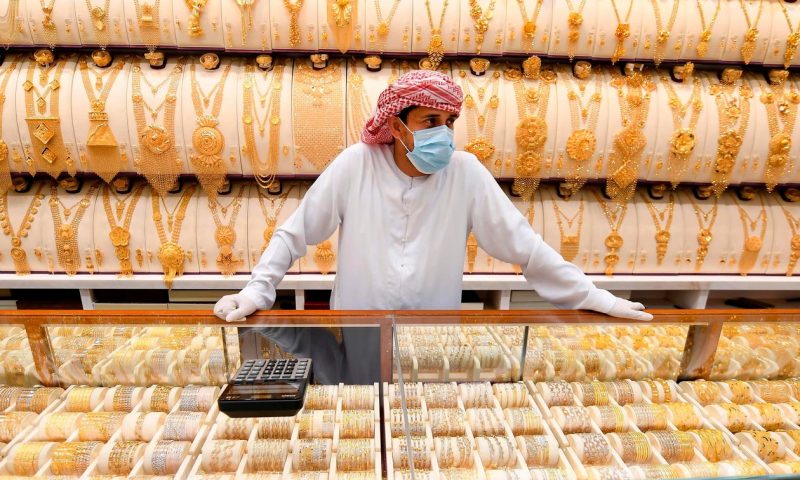Gold futures bounced off a roughly five-month low on Tuesday to log the sharpest one-day gain in more than three weeks, buoyed by a sharp decline in the U.S. dollar.
The yellow metal rebounded with a “little bargain shopping” that was a bit “like Black Friday/Cyber Monday in the gold sector,” said Jeff Wright, executive vice president of GoldMining Inc.
Prices also got a boost from “light ISM data,” he told MarketWatch, and the possibility of a compromise in the U.S. Senate on a $908 billion coronavirus relief proposal. The Institute for Supply Management said its U.S. manufacturing index fell to 57.5% in November from a 21-month high of 59.3% in the prior month.
“It will take time to repair damage to gold from November, but returning above $1,800 is first step before bulls can be in charge once again,” said Wright.
February gold GCG21, -0.34% GC00, -0.34% rose $38, or 2.1%, to settle at $1,818.90 an ounce. That was the largest single-session dollar and percentage gain for a most-active contract since Nov. 5, according to FactSet data.
Prices had declined by 0.4% on Monday to $1,780.90, marking the lowest settlement since July 1. They logged a 5.6% decline in November.
Gold prices “sold off on earlier-than-expected COVID-19 vaccine progress,” with uncertainty about the Federal Reserve’s “next steps and improving macro data” also playing a part, said analysts at UBS, in a research note dated Tuesday.
They expect U.S. real interest rates and the dollar to sink further in the first quarter of 2021 and gold prices to peak in that time period, but believe there is “less upside ahead” for gold because of “the positive economic forces afoot.” The UBS analysts lowered their forecast for the first quarter to $1,950 an ounce, from $2,000.
Meanwhile, March silver SIH21, -1.06%, the most-active contract, rose $1.50, or 6.6%, to finish Tuesday at $24.09 an ounce, after slipping 0.2% in the previous session and falling 5.1% last month.
Some dealers say that a “technical breakdown” of gold prices that had come on the back of progress toward a COVID-19 vaccine has run its course and could pave the way for a reassertion of bullish momentum in the commodity.
The selloff in gold led to a “technical breakdown which we think has now run its course,” wrote Peter Cardillo, chief market economist at Spartan Capital Securities.
“However, while we are not sure as to whether or not prices may retest their recent lows, we do believe the worst of the decline is over,” the analyst wrote on Tuesday.
For now, the U.S. dollar index remains near its recent lows, thanks in part to the ongoing rally for the euro, said Fawad Razaqzada, market analyst at ThinkMarkets, in a note.
A weaker buck can make dollar-priced bullion cheaper to overseas buyers. On Tuesday, the ICE U.S. Dollar Index DXY, -0.18% was down 0.6% at 91.293. It trades around 5% lower year to date.
“If the weakness for the dollar persists, this should help to support precious metal prices, even if government bond yields have rebounded slightly,” said Razaqzada.
For silver, “the higher yields shouldn’t be too much of a headwind, because the grey metal is deemed to be a more risk-sensitive metal than gold,” he said. “With stocks and other risk assets rallying, the grey metal should outperform the yellow metal as hopes rise over demand for industrial materials such as copper and silver.”
Prices for copper also climbed, to mark their highest finish since March 2013, according to FactSet data, based on the most-active futures contracts. March copper HGH21, 0.04% climbed 1.4% to $3.485 a pound.
January platinum PLF21, -0.92% added 3.9% to $1,003.90 an ounce, settling above $1,000 for the first time since August. March palladium PAH21, -0.79% tacked on 1% to $2,429.70 an ounce.

